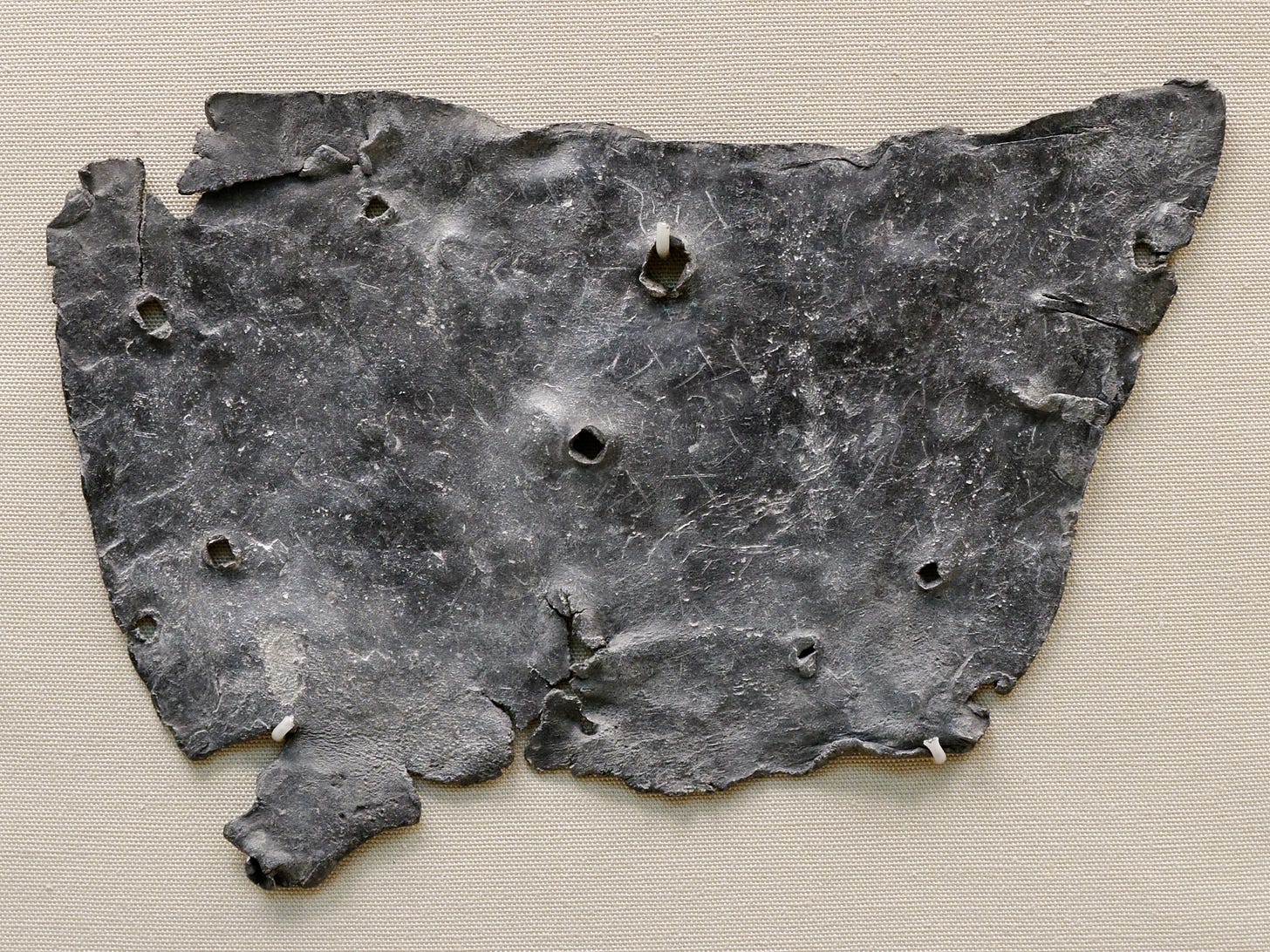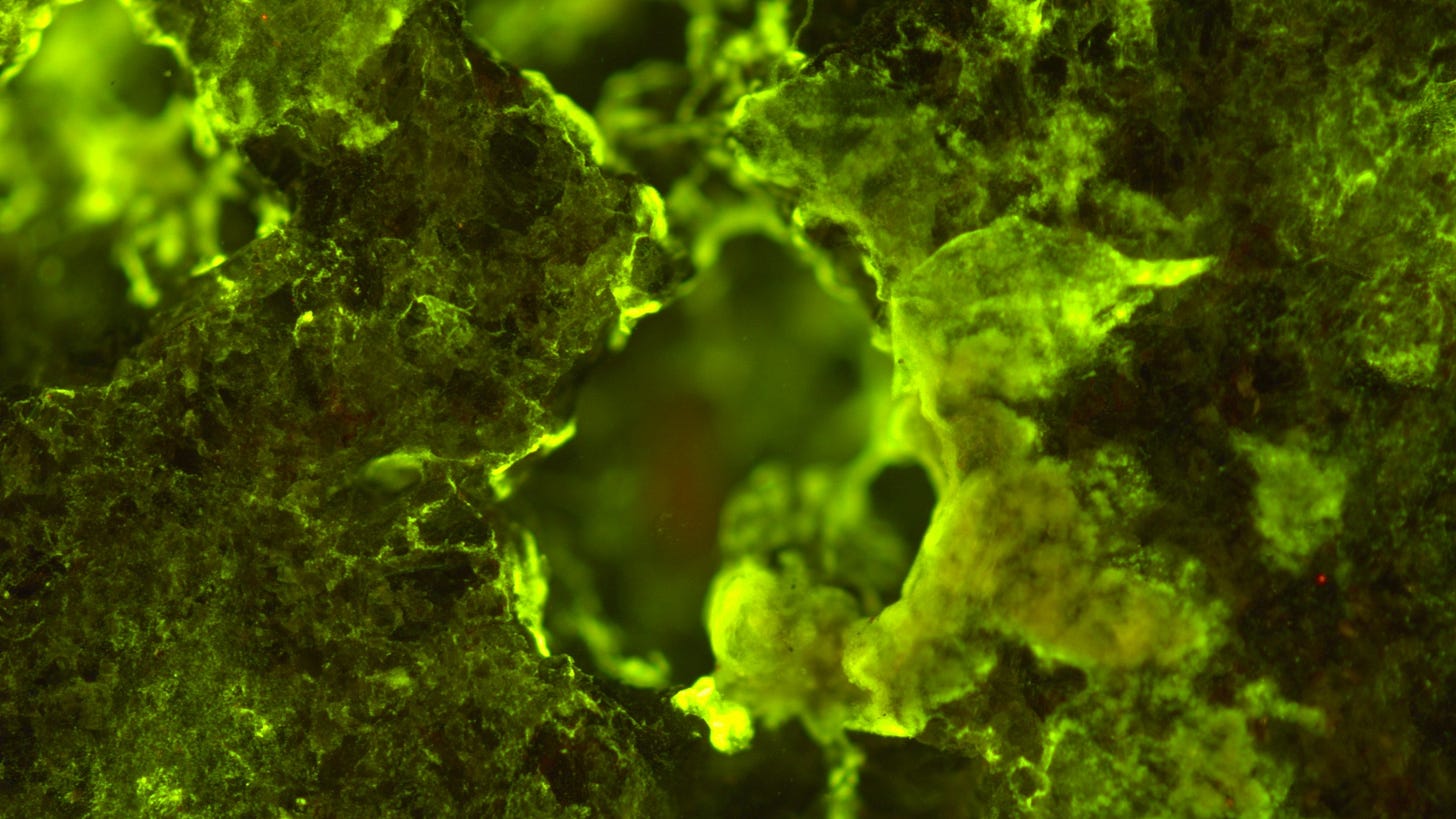Burial curses, asteroid mining, and another new Star Trek language
Hi, everyone!
I hope you’ve enjoyed the first four issues of The Science of Fiction. I’ve had a blast writing about necromancers in space, Baby Yoda’s biology, decolonizing exoplanets, and building alien languages for Star Trek, and I can’t wait to share more of what I’m working on in the months ahead.
For Thanksgiving week, though, I’ve decided to do something a bit different. As journalists are reporting stories, we often collect tidbits that don’t make it into the piece. You can think of these as a bit like the crusts you cut off your bread while you’re making stuffing: Perfectly delicious, but a bit of a distraction from the final product. Normally, these trimmings languish in a folder on the reporter’s desktop until they’re stale and forgotten, kind of like the leftovers you shoved to the back of your fridge last night. (That was my last food analogy, I swear.) But since I have complete creative control over this newsletter, I thought I’d share a few with y’all.
Here are three fascinating things The Science of Fiction learned over the last month:
In Ancient Greece, necromancy was kind of like math
Necromancy, the occult practice of speaking with the dead, isn’t based in science. But in Ancient Greece, it had a bit of a mathematical quality.
That’s according to Kim Schwenk, a rare book dealer and occultist who studies Ancient Greek curse tablets, which magicians placed in graves or tombs in order to summon the dead and curse the living. These tablets were often inscribed with Greek or Hebrew letters that formed strange words not tied to any known language, but that seem to have a tonal quality evocative of shrieks and wails. Known as the voces mysticae, scholars theorize that these chthonic utterances were used to speak with ghosts and demons.
“This is where it gets a bit science-y,” Schwenk said. “Certain tones make certain frequency sounds. So I think they were creating these long strings of vowels to hit different pitch levels and frequency levels when spoken” in order to connect with beings on a different plane of existence. Schwenk describes these ghastly tones as analogous to a radio frequency only the dead could hear.
The burial curses that utilized the voces mysticae were also very formulaic in nature, Schwenk said. A magician “would announce the person, the intended target, then they would plug in their names, then they would plug in the utterance, and then they would call on specific spirits,” she said. “It’s almost like they were doing an equation: They would just plug in different names, like plugging in different numbers, to have a result.”

Asteroid-munching microbes could help us live in space
Crewed interstellar space travel is going to be tough, and to have a shot in hell at pulling it off, we’ll probably need to mine asteroids. These space rocks are an abundant source of metals and water, and mining them ensures we don’t need to pack 200 years’ worth of supplies when we send our generation ships sailing off into the void.
But we may want to pack some extra bacteria, if the results of a recent scientific experiment on the International Space Station are any indicator. In that experiment, called BioRock, astronauts cultivated three different types of microbes on slabs of basalt, a rock found on both Mars and the Moon. They then studied the bugs’ ability to extract a group of metals called rare earth elements under three different conditions: microgravity, found on asteroids, simulated Martian gravity, and simulated Earth gravity. One of these would-be space mining microbes—the bacterium Sphingomonas desiccabilis—was capable of extracting rare earth elements under all three conditions, according to the results published this month in Nature Communications.

The authors conclude that rock-munching microbes could help “advanc[e] the establishment of a self-sustaining permanent human presence beyond the Earth,” and suggest that we build a rare earth bio-mining facility on the Moon as a next step.
Another new Star Trek language!
Last week, The Science of Fiction published an exclusive interview with linguist Nick Farmer on how he developed the mysterious Trill language for Star Trek: Discovery. But Trill isn’t the only Federation tongue Farmer can now put on his resume: Discovery also enlisted him to develop the language of the Barzan people, which Michael Burnham, Commander Nhan, and Doctor Hugh Culber hear spoken by a holographic recreation of a Barzan family in the episode “Die Trying”.
Farmer told The Science of Fiction that Discovery wanted the language to reflect the fact that “there’s an intensity to them as a species, a particular focus and commitment to one another and any given task at hand.”
The most intense sounds Farmer could think of were ejective consonants, consonants that are produced by contracting muscles in the neck in order to compress the airway. (You can listen to some examples here.) Farmer said he was “a little worried” about including ejective consonants in the Barzan language because they’re not intuitive for everyone to produce, but that the actors did a good job with some coaching.
“I also borrowed some of the prosody from Finnish, which puts the emphasis on the first syllable of the word,” Farmer added. “Always came across as punchy to me.”
A request to readers…
This little newsletter is growing up fast! The Science of Fiction is gaining new subscribers every day, and it had its first media feature recently when I spoke with KIRO 97.3 FM’s Mike Lewis about science communication, Baby Yoda, and my favorite (and least favorite) depictions of science in fiction. If you want a deep dive into my thoughts on these topics and more, the full 25-minute interview is available here.
To continue bringing you the nerdiest journalism on the planet, though, The Science of Fiction needs your help. If you’ve liked this newsletter so far, please consider sharing it on your social media platform of choice so that more people find it and subscribe. Not on social media? Forward this email to a friend or family member, or heck, tell them about it IRL (in a safe, socially-distanced manner of course).
Thanks again for reading, and have a wonderful weekend!
— Maddie